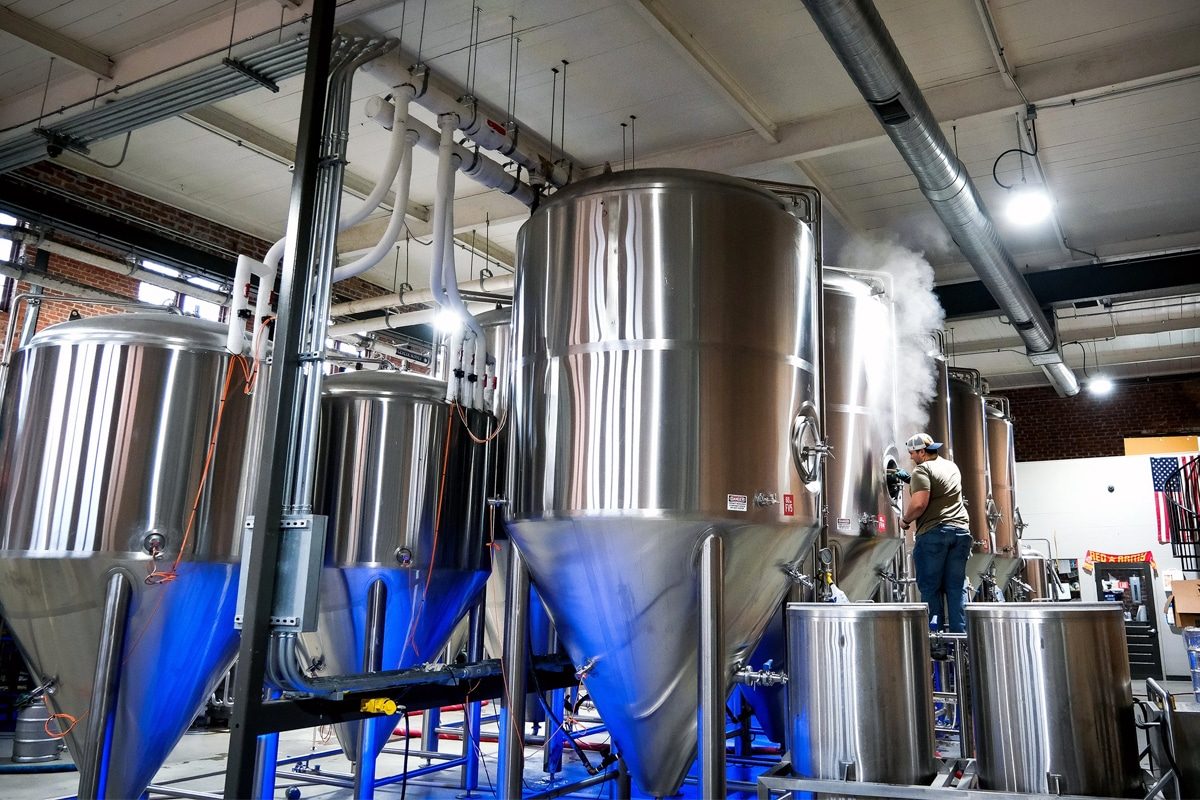
How To Control Oxygen Levels During Brewing?
Controlling oxygen levels during brewing is a critical aspect of producing high-quality beer. Oxygen plays a dual role in the brewing process: it is essential for yeast health and activity during the initial stages of fermentation, yet it becomes a detrimental factor once fermentation is underway. Excess oxygen can lead to oxidation, causing undesirable flavors and aromas, such as wet cardboard or stale beer, and significantly reducing the beer’s shelf life. Therefore, mastering the art of oxygen management is vital for both homebrewers and commercial brewers.
This article delves into the importance of oxygen control, exploring the various methods and best practices to ensure that oxygen is beneficial when needed and minimized when it poses a risk. By understanding and implementing effective oxygen control strategies, brewers can enhance the quality, stability, and overall enjoyment of their beer.
Complete Guide
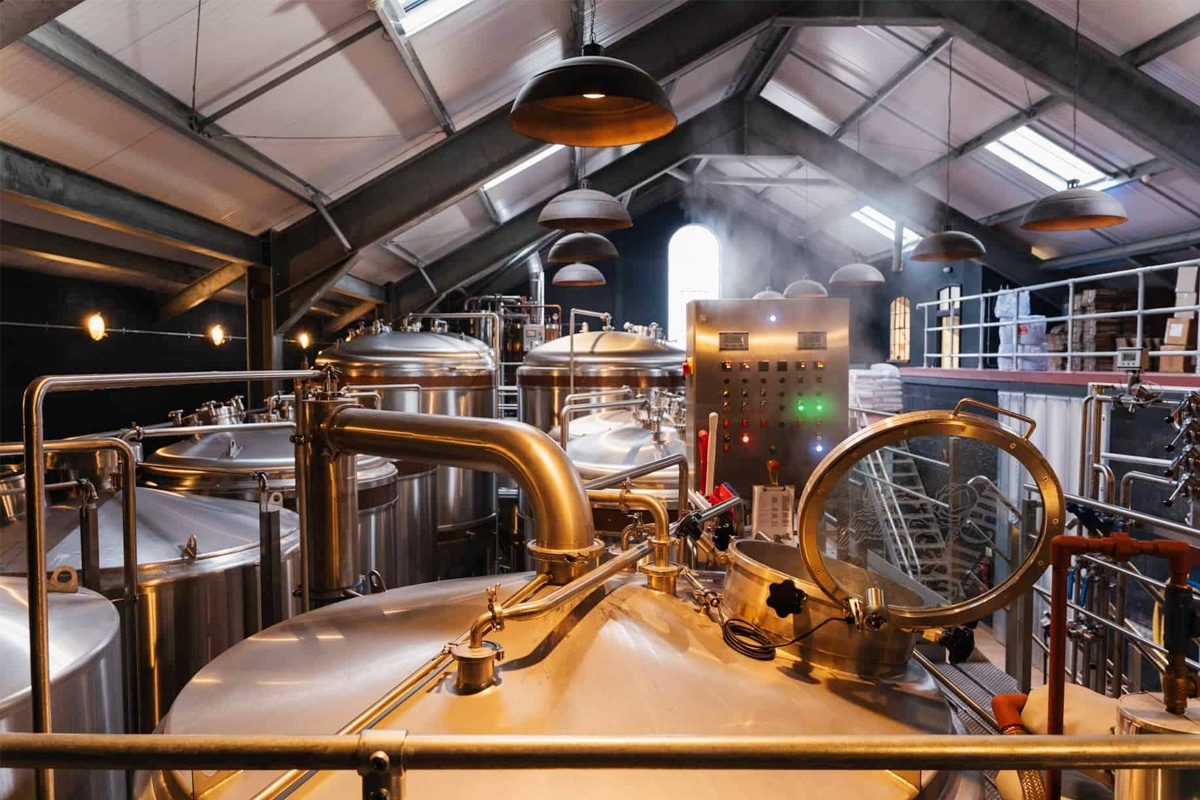
Understanding Oxygen's Role in Brewing
Oxygen is a double-edged sword in the brewing process. Its presence is both essential and potentially harmful, depending on the stage of brewing. To effectively manage oxygen levels, it is therefore necessary to understand its role and impact at all stages of beer production.
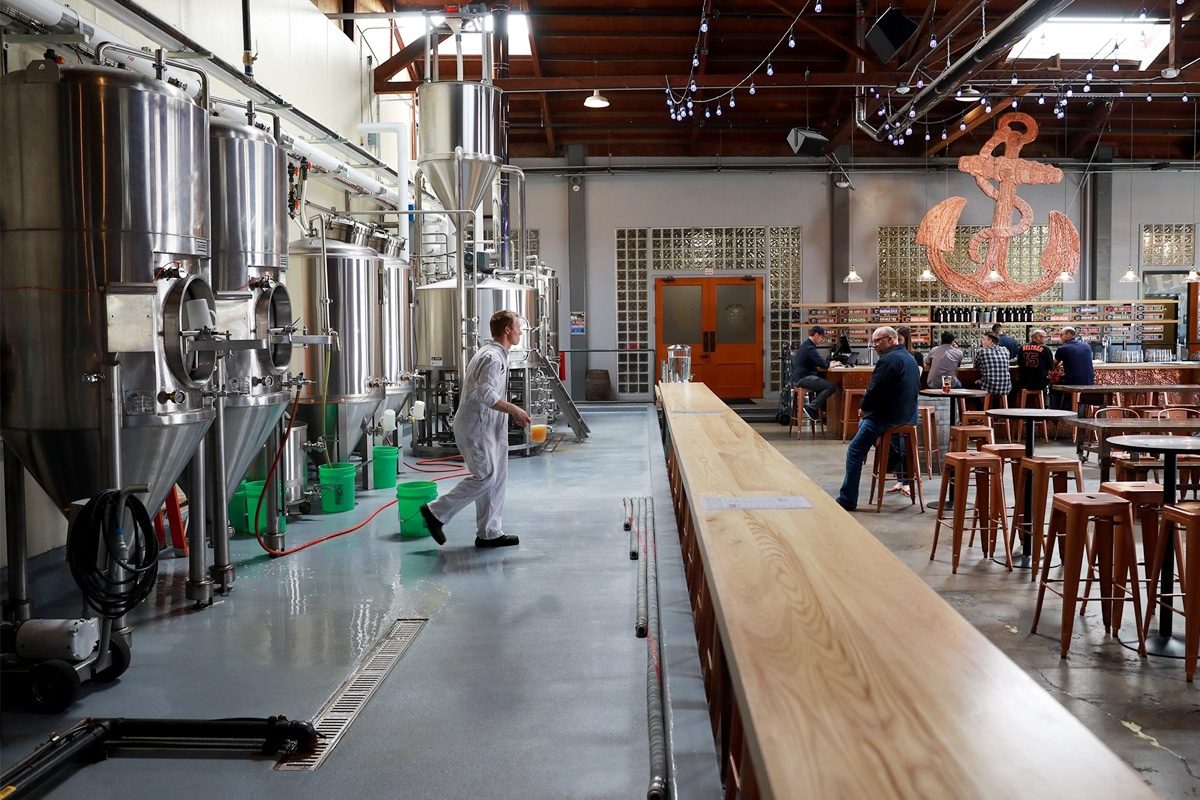
The Impact of Oxygen on Beer Quality
Understanding the effects of oxygen on beer quality can help brewers produce higher-quality beer. Oxygen plays a multifaceted role, with both positive and negative effects that can significantly influence the final product.
Positive Effects
Yeast Health and Fermentation
- Wort Aeration: Oxygen is essential during the initial stages of brewing, particularly during wort aeration. Introducing oxygen to the wort before fermentation begins helps yeast cells synthesize sterols and fatty acids, which are crucial for building healthy cell membranes. This results in robust yeast growth and activity, ensuring a vigorous and consistent fermentation process.
- Fermentation Efficiency: Adequate oxygenation at this stage supports the yeast’s metabolic functions, allowing for efficient sugar consumption and the production of desired flavors and aromas. This initial oxygenation helps prevent fermentation issues such as stuck or sluggish fermentations, leading to a more predictable and controlled brewing process.
Negative Effects
Oxidation
- Off-Flavors: Once fermentation has begun, oxygen becomes detrimental. Oxygen ingress at this stage can lead to oxidation, which causes undesirable flavors in the beer. Common off-flavors associated with oxidation include notes of wet cardboard, paper, or sherry-like characteristics. These flavors are generally considered unpleasant and can significantly diminish the overall quality of the beer.
- Aroma Degradation: Oxidation also negatively impacts the beer’s aroma. It can dull the vibrant hop and malt aromas that brewers strive to achieve, resulting in a less aromatic and enjoyable beer.
Shelf Life Reduction
- Stability Issues: The presence of oxygen post-fermentation can drastically reduce the beer’s shelf life. Oxidized beer tends to stale more quickly, making it less appealing to consumers over time. For commercial brewers, maintaining product stability on store shelves is essential, and oxidation can compromise this.
- Microbial Growth: Oxygen can also promote the growth of unwanted microbes in the beer, leading to spoilage and potential health risks. This is particularly concerning for beers with longer aging processes, where any oxygen ingress can have prolonged negative effects.
Color Changes
- Darkening Effect: Oxygen exposure can cause the beer to darken over time. This color change is a result of oxidative reactions with polyphenols and other compounds in the beer. While this may not directly affect flavor, it can impact the visual appeal of the beer, which is an important aspect of the overall drinking experience.
The impact of oxygen on beer quality is profound and multifaceted. While it plays a beneficial role during the initial stages of brewing by supporting yeast health and fermentation efficiency, its presence post-fermentation can lead to significant quality issues. By understanding both the positive and negative effects of oxygen, brewers can implement effective strategies to control oxygen levels, ensuring the production of high-quality, stable, and flavorful beer.
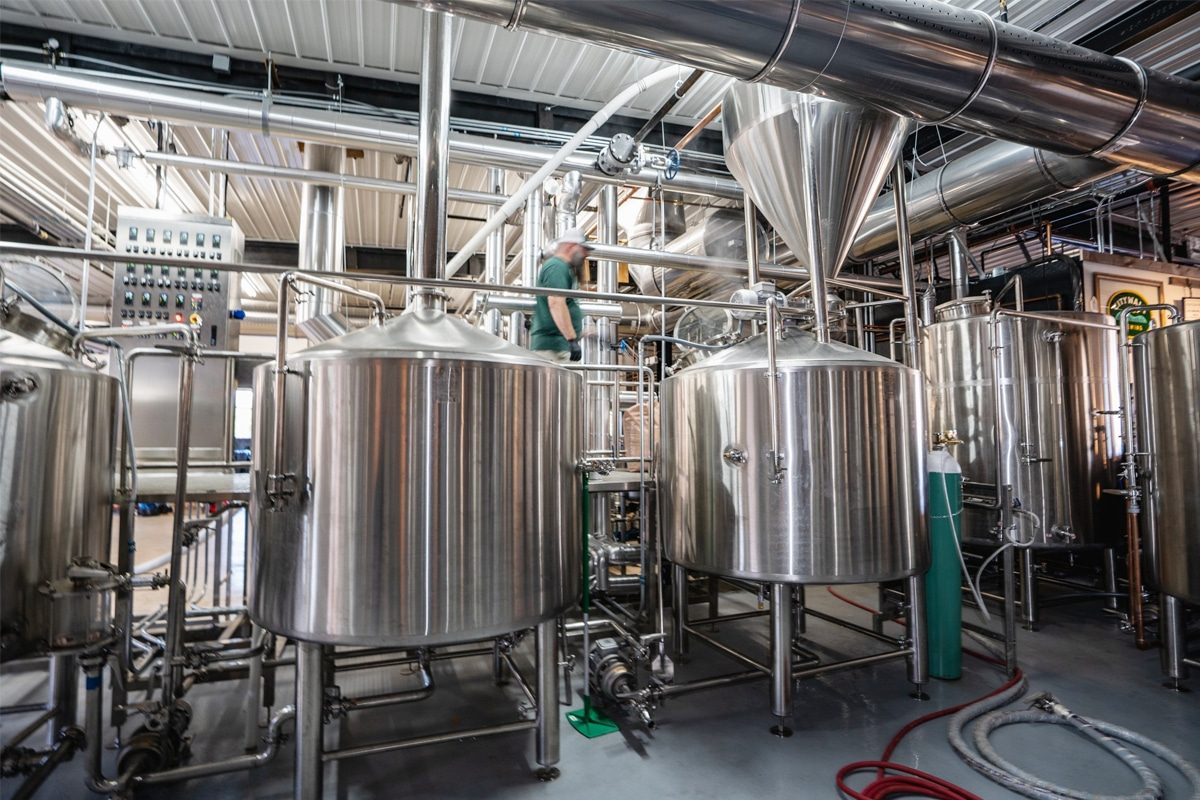
The Role of Oxygen in Different Stages of Brewing
Effective oxygen control is critical throughout the brewing process, from the handling of raw materials to the final packaging of beer. Each stage requires specific attention to oxygen levels to ensure the highest quality and stability of the final product. Here’s an in-depth look at the role of oxygen during each stage of brewing:
Raw Material Handling
Importance
- Oxygen can cause raw materials, especially malt and hops, to degrade, leading to off-flavors and reduced brewing quality.
Role of Oxygen
- Malt: Exposure to oxygen can cause malt to oxidize, resulting in stale flavors. Proper storage in airtight containers in a cool, dry place is essential to maintain freshness.
- Hops: Hops are highly sensitive to oxygen, which can lead to the loss of essential oils and aromatic compounds. Vacuum-sealed or nitrogen-flushed packaging and storage in a freezer can significantly reduce oxidation.
Mashing and Lautering
Importance
- Minimizing oxygen exposure during mashing and lautering helps preserve the wort’s quality and prevents unwanted oxidation reactions.
Role of Oxygen
- Mashing: Oxygen introduced during mashing can lead to the oxidation of polyphenols and other compounds, resulting in undesirable flavors. Gentle stirring and covering the mash tun can minimize oxygen contact.
- Lautering: When separating the wort from the spent grains, excessive splashing can introduce oxygen. Use gentle sparging techniques and keep the wort covered to limit exposure.
Boiling
Importance
- Boiling helps to drive off oxygen and other volatile compounds, creating a stable wort environment for fermentation.
Role of Oxygen
- Oxygen Removal: A vigorous boil expels dissolved oxygen, which is crucial to prevent oxidation of wort components.
- Volatile Compound Reduction: Boiling with the lid off allows volatile compounds such as dimethyl sulfide (DMS) to evaporate, improving the wort’s quality.
Cooling
Importance
- Rapid cooling of the wort to fermentation temperature is necessary to prevent microbial contamination and oxidation.
Role of Oxygen
- Wort Chillers: Efficient wort chilling systems (immersion, counterflow, or plate chillers) minimize the time the wort is exposed to oxygen. Ensuring all connections are airtight prevents oxygen ingress.
- Closed Systems: Utilizing a closed system for transferring cooled wort to the fermentation tank helps maintain an oxygen-free environment, essential for the next stages.
Fermentation
Importance
- Oxygen helps keep the yeast healthy at the beginning of fermentation, but once fermentation begins, oxygen must be minimized to prevent oxidation.
Role of Oxygen
- Wort Aeration: Introducing oxygen before fermentation supports yeast growth and reproduction by facilitating the synthesis of sterols and fatty acids.
- Anaerobic Conditions: After initial oxygenation, fermentation must occur in an anaerobic environment. Using sealed fermenters with airlocks or blow-off tubes and purging with CO2 helps maintain this environment.
Post-Fermentation
Importance
- Protecting beer from oxygen during transfer and aging preserves its quality and extends its shelf life.
Role of Oxygen
- Closed Transfers: Moving beer between vessels should be done using closed systems and purging with CO2 or nitrogen to avoid oxygen exposure.
- Inert Gas Blanket: Maintaining a CO2 or nitrogen blanket over the beer during storage prevents oxidation and microbial growth.
Packaging
Importance
- Proper packaging techniques are essential to protect the beer from oxygen, ensuring it remains fresh and flavorful until consumption.
Role of Oxygen
- Purging Containers: Before filling, purge bottles, cans, and kegs with CO2 to eliminate oxygen. This step is critical to preventing oxidation during packaging.
- Counter-Pressure Filling: Using counter-pressure filling methods helps maintain carbonation and minimizes oxygen ingress.
- Oxygen-Scavenging Materials: Employing oxygen-absorbing caps and liners can further reduce the risk of oxidation in the packaged beer.
Oxygen management is a vital component of the brewing process, influencing the quality and stability of beer at every stage. From raw material handling to final packaging, careful control of oxygen levels ensures the production of high-quality, stable, and flavorful beer. By understanding the role of oxygen and implementing best practices, brewers can protect their beer from oxidation and maintain its intended character and freshness.
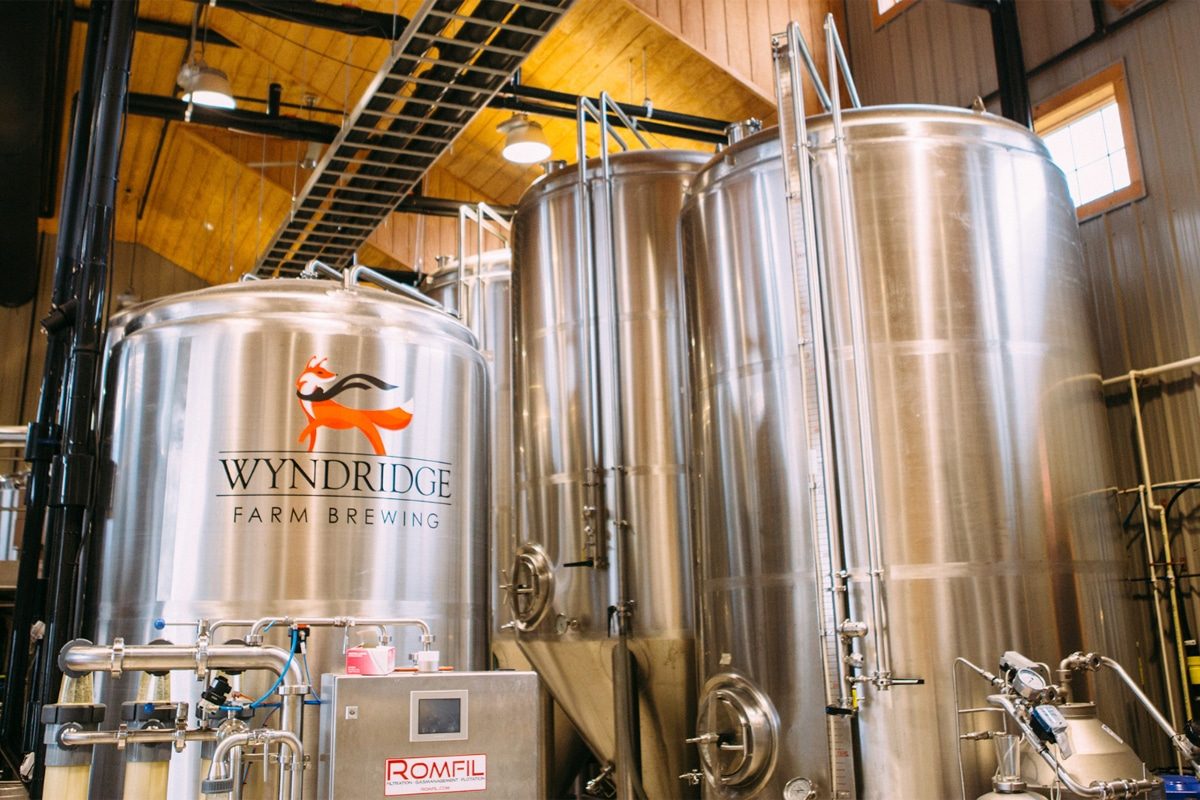
Oxygen Control During Brewing Stages
Effective oxygen control is essential at every stage of the brewing process to ensure the production of high-quality beer. Each step, from raw material handling to packaging, requires specific techniques to manage oxygen levels and prevent undesirable effects such as oxidation. Here’s a detailed guide on how to control oxygen during each stage of brewing:
Raw Material Handling
Objective: Preserve the freshness and quality of raw materials.
Malt Storage
- Technique: Store malt in airtight containers in a cool, dry environment.
- Rationale: Prevents oxidation, which can cause staleness and off-flavors in the malt.
Hops Storage
- Technique: Use vacuum-sealed or nitrogen-flushed packaging and store hops in a freezer.
- Rationale: Protects delicate hop oils and aromatic compounds from oxidation.
Mashing and Lautering
Objective: Minimize oxygen exposure to prevent oxidation of wort components.
Mashing
- Technique: Use gentle stirring and cover the mash tun.
- Rationale: Reduces the introduction of oxygen, preserving the wort’s quality.
Lautering
- Technique: Implement gentle sparging techniques and keep the wort covered.
- Rationale: Prevents oxygen pickup during the separation of wort from spent grains.
Boiling
Objective: Drive off unwanted oxygen and volatile compounds.
Vigorous Boil
- Technique: Maintain a strong, rolling boil with the kettle lid off.
- Rationale: Expels dissolved oxygen and allows undesirable compounds like dimethyl sulfide (DMS) to evaporate.
Cooling
Objective: Prevent oxygen pickup while cooling the wort to fermentation temperature.
Wort Chillers
- Technique: Use immersion, counterflow, or plate chillers with airtight connections.
- Rationale: Rapidly cools the wort while minimizing oxygen exposure.
Closed Cooling Systems
- Technique: Transfer cooled wort directly to the fermenter using sanitized, airtight hoses and fittings.
- Rationale: Maintains an oxygen-free environment during transfer.
Fermentation
Objective: Ensure optimal yeast health with initial oxygenation and maintain anaerobic conditions thereafter.
Wort Aeration
- Technique: Aerate wort using methods like shaking, aeration stones, or pure oxygen systems.
- Rationale: Provides the necessary oxygen for yeast to synthesize sterols and fatty acids, promoting healthy fermentation.
Sealed Fermenters
- Technique: Use fermenters with tight-fitting lids, airlocks, or blow-off tubes.
- Rationale: Prevents oxygen ingress while allowing CO2 to escape, maintaining anaerobic conditions.
CO2 Purging
- Technique: Purge fermenters with CO2 before filling them with wort.
- Rationale: Displaces residual oxygen, creating a safe environment for fermentation.
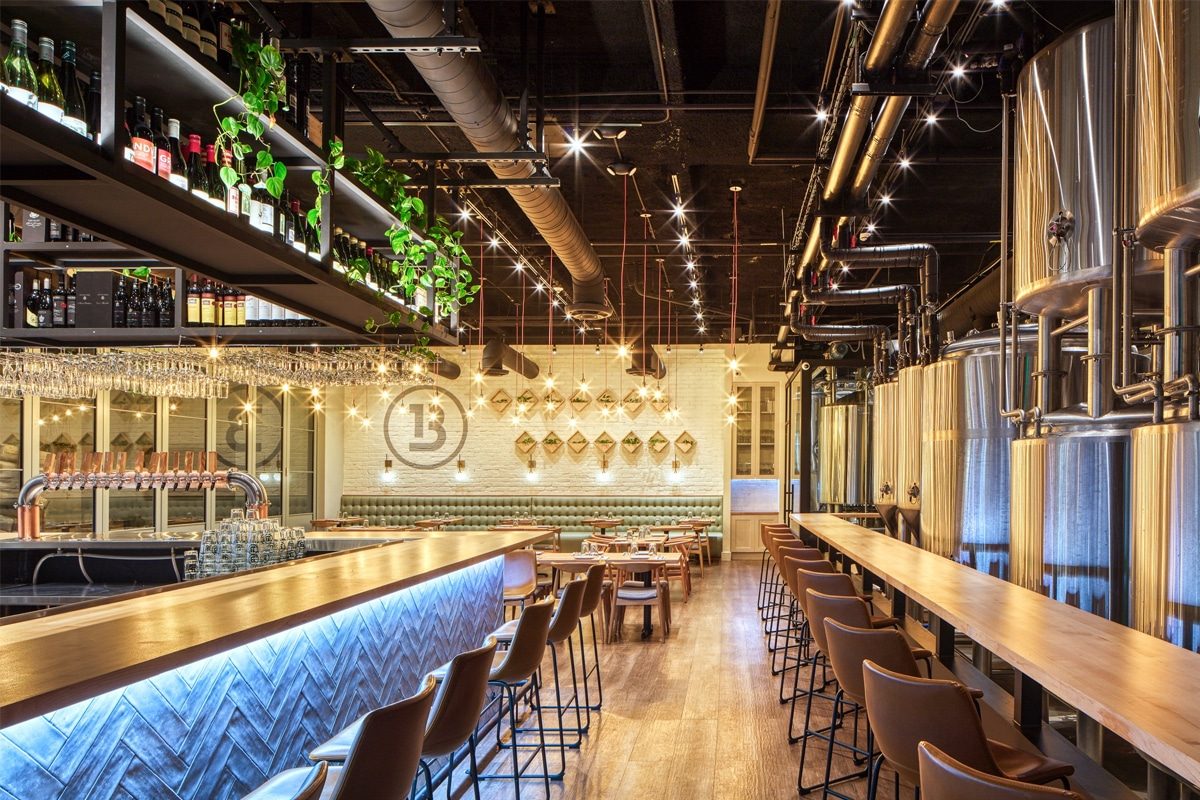
Common Challenges and Solutions in Controlling Oxygen Levels During Brewing
Managing oxygen levels during brewing is crucial, yet it can be challenging due to the various ways oxygen can infiltrate the process. Here are some common challenges brewers face and practical solutions to address them:
Oxygen Ingress During Wort Aeration
Problem: Achieving optimal oxygen levels during wort aeration without introducing excessive oxygen, which can lead to oxidation later.
Solution
- Controlled Aeration Systems: Use precise wort aeration systems with aeration stones or inline oxygenation systems that allow for controlled and measured oxygen introduction.
- Pure Oxygen: Employ pure oxygen systems with regulators to achieve the desired dissolved oxygen levels (8-10 ppm for ales, 10-12 ppm for lagers) without over-aerating.
- Sanitization: Ensure all aeration equipment is thoroughly sanitized to avoid contamination and ensure efficient oxygen uptake by yeast.
Oxygen Exposure During Fermentation
Problem: Maintaining anaerobic conditions during fermentation while allowing CO2 to escape.
Solution
- Sealed Fermentation tanks: Use fermenters with airtight lids and airlocks or blow-off tubes to create a sealed environment, allowing CO2 to escape without letting oxygen in.
- CO2 Purging: Before filling fermenters with wort, purge them with CO2 to displace any residual oxygen, creating a protective CO2 blanket.
Oxygen Ingress During Transfers
Problem: Oxygen can enter the beer during transfers between vessels, especially during racking and kegging.
Solution
- Closed Transfer Systems: Implement closed transfer systems using sanitary hoses and connectors that prevent air contact. Ensure all connections are airtight.
- CO2 or Nitrogen Purging: Purge lines, hoses, and receiving vessels with CO2 or nitrogen before transfers to eliminate oxygen.
- Pressure Transfers: Use pressure transfers with CO2 to move beer from one vessel to another, maintaining an oxygen-free environment.
Oxygen Pickup During Cooling
Problem: Rapid cooling of wort can introduce oxygen if not done properly.
Solution
- Efficient Wort Chillers: Use high-quality immersion, counterflow, or plate chillers that cool the wort quickly and minimize exposure to air.
- Airtight Connections: Ensure all chiller connections are airtight to prevent oxygen ingress during cooling.
- Closed Cooling Systems: Employ closed-loop systems that transfer cooled wort directly to fermenters without exposure to the atmosphere.
Oxygen Exposure During Packaging
Problem: Packaging processes are a major source of oxygen ingress, which can significantly impact beer quality and shelf life.
Solution
- Purging Containers: Purge bottles, cans, and kegs with CO2 before filling to remove any residual oxygen.
- Counter-Pressure Filling: Utilize counter-pressure filling techniques for bottles and kegs, which help maintain carbonation and minimize oxygen pickup.
- Oxygen-Scavenging Materials: Use oxygen-absorbing caps and liners to further reduce the risk of oxidation in packaged beer.
Measuring and Monitoring Oxygen Levels
Problem: Accurately measuring and monitoring oxygen levels throughout the brewing process can be challenging and requires specialized equipment.
Solution
- Dissolved Oxygen Meters: Invest in high-quality dissolved oxygen meters to measure oxygen levels accurately at various stages of brewing.
- Regular Calibration: Regularly calibrate and maintain oxygen meters to ensure reliable readings.
- Routine Monitoring: Implement routine monitoring practices to check oxygen levels at critical points, such as post-aeration, during transfers, and before packaging.
Oxidation of Raw Materials
Problem: Raw materials, especially hops and malt, are susceptible to oxidation, which can affect the final beer’s quality.
Solution
- Proper Storage: Store malt in airtight containers in a cool, dry place and hops in vacuum-sealed or nitrogen-flushed packaging in a freezer.
- Fresh Ingredients: Use the freshest possible ingredients and practice first-in, first-out (FIFO) inventory management to minimize the time raw materials are exposed to oxygen.
Controlling oxygen levels during brewing involves addressing numerous challenges at each stage of the process. By implementing precise and effective solutions, brewers can minimize the detrimental effects of oxygen, ensuring the production of high-quality, stable, and flavorful beer. From controlled aeration to airtight transfer systems and oxygen-scavenging packaging, careful oxygen management is key to brewing success.
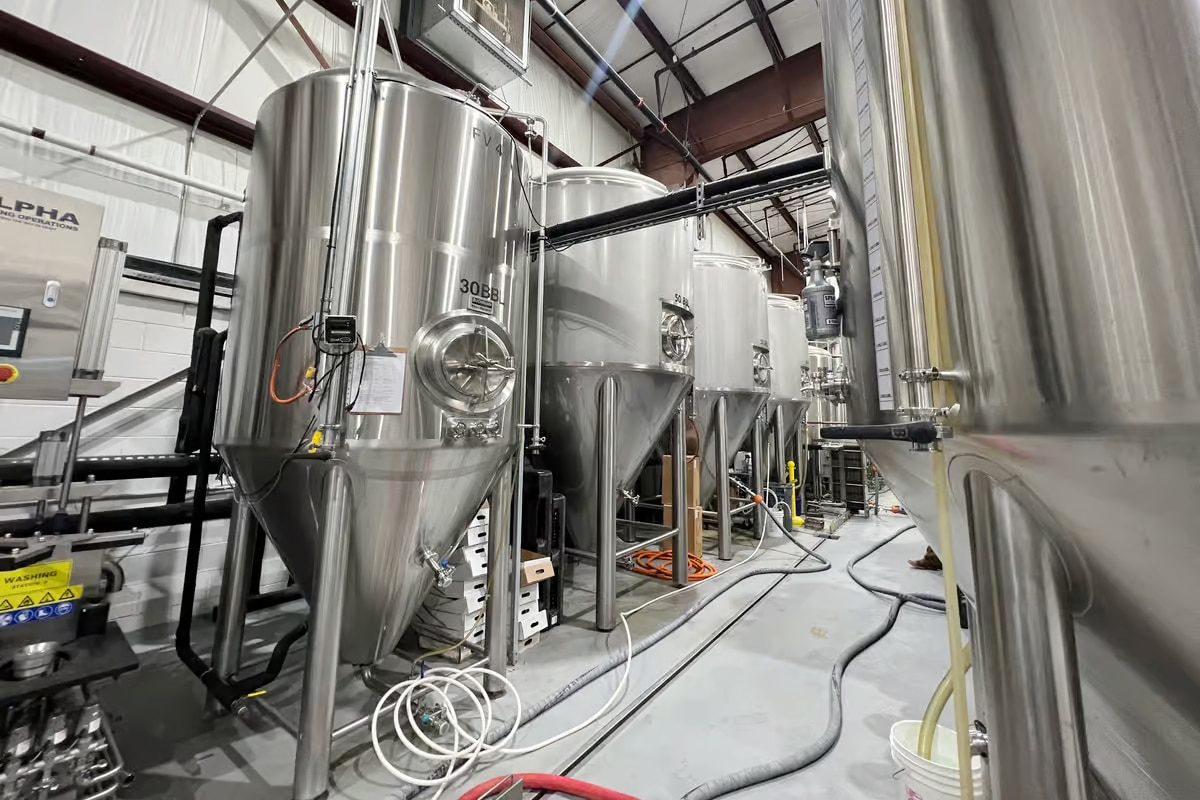
Summarize
Controlling oxygen levels during the brewing process can produce high-quality beer. Oxygen plays a dual role: it is vital for yeast health during wort aeration but becomes detrimental once fermentation begins. Effective oxygen management involves precise techniques at each brewing stage, from raw material handling and mashing to boiling, cooling, fermentation, post-fermentation, and packaging. Key strategies include using sealed systems, purging with CO2 or nitrogen, employing efficient wort chillers, and utilizing oxygen-absorbing materials. Common challenges, such as oxygen ingress during transfers and packaging, can be mitigated with closed systems and counter-pressure filling methods. Regular monitoring with dissolved oxygen meters ensures accurate control throughout the process.
By implementing these practices, brewers can minimize oxidation, preserving the beer’s flavor, aroma, and stability, ultimately delivering a superior product to consumers. Effective oxygen management is the cornerstone of maintaining beer quality and achieving brewing excellence.
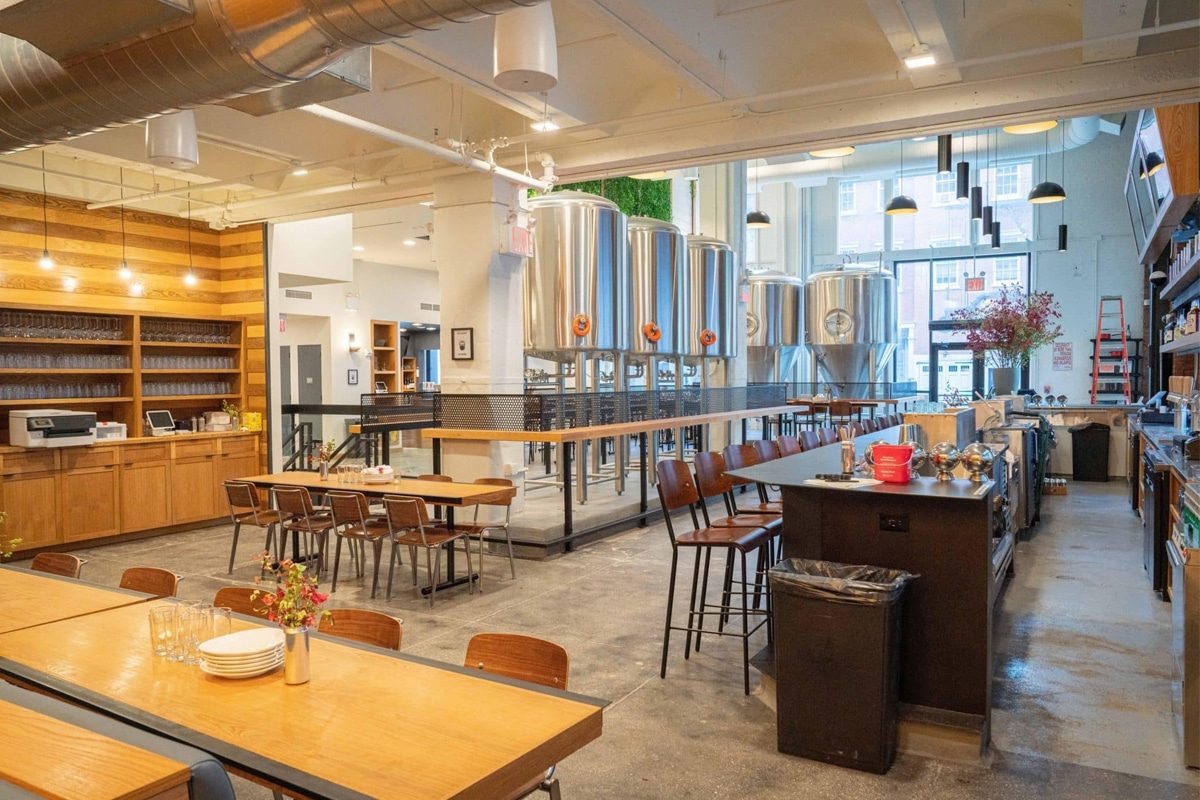
Get A Turnkey Brewery Solutions
Controlling oxygen levels during brewing is crucial, and having the right equipment and systems in place can make all the difference. ZYB Craft, a professional brewery solution provider, offers comprehensive turnkey solutions designed to optimize every stage of your brewing process. With ZYB Craft’s advanced technology and expertise, you can ensure precise oxygen management from raw material handling to final packaging.
Our turnkey brewery solutions include state-of-the-art fermentation tanks with airtight seals, efficient wort chillers, and CO2 purging systems that prevent oxygen ingress at critical stages. We also provide closed transfer systems and counter-pressure filling equipment to maintain the integrity of your beer during transfers and packaging. Additionally, ZYB Craft offers oxygen-scavenging materials and dissolved oxygen meters for accurate monitoring and control.
By partnering with ZYB Craft, you gain access to top-quality equipment and expert guidance, ensuring your brewery operates at peak efficiency. This not only enhances the quality and stability of your beer but also simplifies your brewing process, allowing you to focus on creating exceptional brews.



